Thanks to a day-long tour with a wise driver, a guided walk through the Botanical Gardens, and random chatter with loquacious locals, the SV green (and other countless colors) took on new meaning. They instinctively practice the Simplicity and Slow Movements here—while also industriously growing their own.
Even the kids gawked, picked, tasted, and asked away—wherever we went. SV is rich with nature and resources, to be sure, but it also offers a fine model of how to sustain it all.
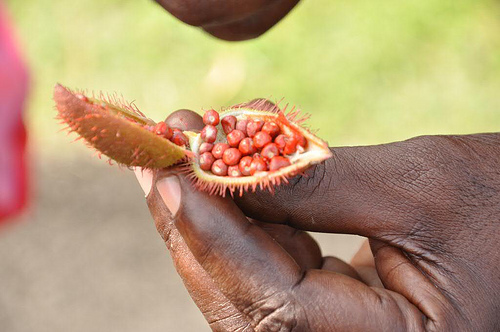
These seeds served as "war paint" for the Carib indians.
- Live simply. Most folks don’t have much, but don’t need—or want—much. They live well with less, and not much goes to waste.

- Garbage control. Speaking of waste…Plant matter becomes fertilizer. Glass is recycled. Scraps might feed animals. And the tiny garbage dump—where they first sort and recycle commodities and compost plant matter—is cleverly concealed behind tall plants.

- Turn it off. Polite signs remind you to turn off lights when you leave a room or bathroom. Motion detector and timer lights are common. And few houses glow at night.
- Water power. SV generates up to half of its electricity from a series of long, oak pipes that catch the water from the mountaintop and take it to turbines waiting below. How cool is that?
- Water away. Unlike most Caribbean islands, SV has ample supply. So things seem greener and cleaner. Best of all, gardens and plants need never go thirsty. And yes, you can flush!
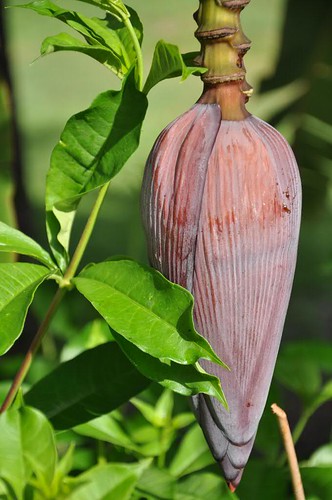
- Grow your own. Not every house has a garden. Produce is cheap, after all. But most do, and take pride in nurturing their own tomatoes, peas, beans, mangos, bananas, and more. Almost always organic, of course!
- Grow your own…ganja. As for the 3,000 industrious Rastas, their fields are way high near the top of the volcano, where the best soil sits. Their little huts dot the hillside. Don’t go there (although the police occasionally try).
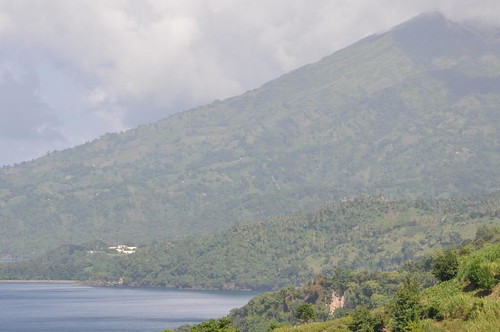
- Try doing without. Glass of water with dinner? Another napkin? Window screens? Most Vincentians live without many amenities—and expect you might try the same.
- Be sheepish. They love their mutton—and other locally grown meats. So even in the city, sheep may be tied to a tree or mowing a lawn. Same goes for goats and cows.
- Be chicken. It’s a safe bet that most eggs and chicken meat don’t come from the store, since chickens strut most anywhere. They can live off your green scraps, you know.
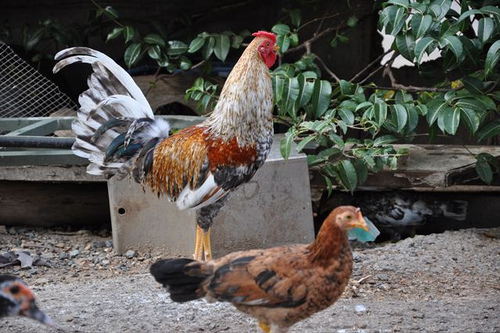
- Watch your head! Some towering trees bear fruit the size of footballs—including avocado, mango, and breadfruit. There’s even a seed called the cannonball. When they’re ripening (and falling), look up.
- Practice plateau-ism. Like the grape fields of Italy and the rice paddies in Asia, crops grow in some dang steep places. A little “watch” house is sometimes nearby so the worker can take a sun—or even weekend—break between toiling stretches.
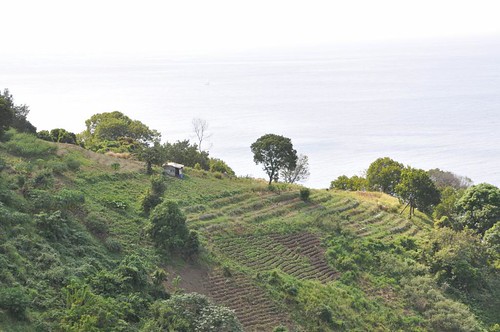
- Share vehicles. Up to 24 passengers will pile in and out of privately-owned mini-vans that are used for public transportation. The vehicles bear loud names like “Righteous,” “Exodus,” and “Star Boy.” The drivers know fast only; a co-pilot takes your dollar; the bass booms. Hitchhiking is common, as is jumping in and out of a pickup.
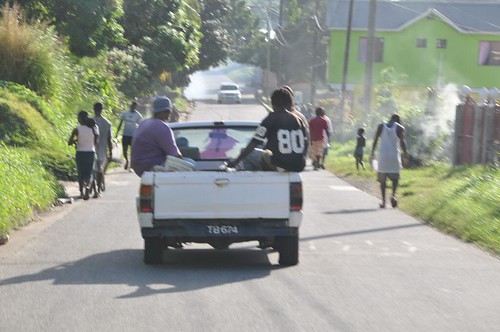
- Get eats on the go. Fruits and veggies and snacks appear at little stands wherever you turn. They may look ramshackle, but each has a permit and undergoes health inspections. Renegades are not given a warning; they simply lose everything—on the spot.
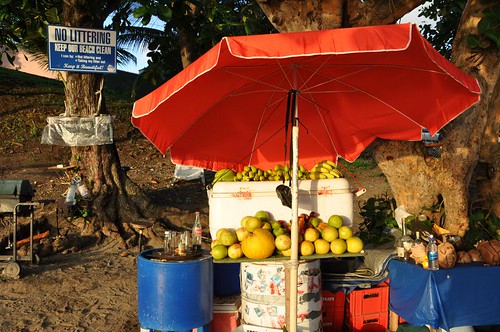
- Find fresh fish. Ask anyone, and they’ll tell you the best source for some fresh seafood. Usually, it’s relative or neighbor, about a block away. You must get it fresh in the morning.

- Bring on the blossoms. Flowers glow from unthinkable places and in unimaginable colors. Our Botanical Gardens guide could turn a bloom into a baby in a bathtub, or a leaf into a butterfly—and even make “the sensitive plant” close its leaves instantly.
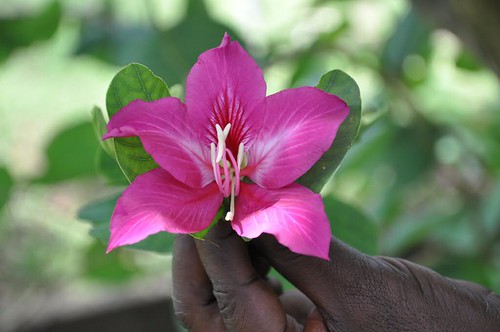
- Eat locally and seasonally. “No no no, don’t eat mangos now—not in season so not from St. Vincent.” True, true. And why bother when starfruit, green oranges, and papaya are plentiful now? Taste treats appeared made of delicacies we’d never even heard of.
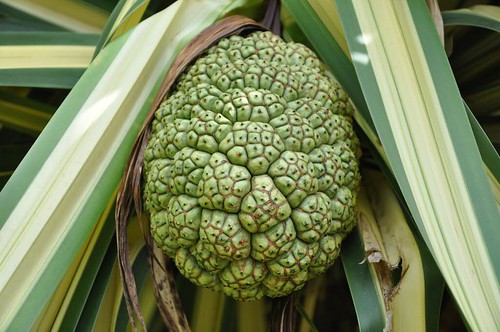
- Eat most anything. The inside of some ugly fruit makes a great starch dish. This plant makes a tasty tea. Cook with these leaves for the taste of garlic. Roast this one over fire then slice it with some hot sauce. Etc. Etc. Etc.
- Heal thyself. Our guidebook’s advice regarding medical care on St. Vincent? Don’t get sick or have an accident here. Yet perhaps Vincentians don’t have all that much need for Western medicine. Many would mention “we are returning to the land instead of to drugs” for remedies—a tea that cures a cold, an herb that soothes sore bones, a tuber that aids indigestion.
No wonder they all look quite healthy, with little obesity. And it’s no surprise that they like to wear bright colors, and seem incapable of taking things—especially their island’s beauty and riches—for granted.
It’s a good way of life, with nary an Applebees, Bruegger’s, or Starbuck’s to be found.












January 10th, 2009 at 7:10 am
How I wish I were there with you all to experience the wonder of a new place.. It’s sameold sameold here, but that’s not bad either. More to read, ponder & will reply again. Keep it coming!!!!! Love kk
January 10th, 2009 at 11:05 am
kirk,
the pic’s are spectacular! they somehow warm the soul for those of us who are temperature challenged right now. aside from obvious skill and talented subjects, to what do you credit their beauty?
cool breezes
scott
January 11th, 2009 at 10:29 am
Hello Mr. Scott,
Thanks for the kind words. But I always say that it’s pretty easy to take pretty good shots when you’ve got great scenery!
The cameras are 2. Coolpix 550 is the pocket Nikon for quick mobile/easy. Pretty darn good for its size, and has a LOT of bells and whistles (more than you want?). I like it for its size—and ability to use for ‘sneak’ shots–focus on something at the same distance as your target. Then turn quick and pop the pic you REALLY wanted to take. Hope not to get a tongue lashing (I’ve only gotten one, and hadn’t even taken the pic).
People down here are sensitive about having the photo taken, though. So I mostly respect that, though it compromises the menu of possibilities for sure. It’s been explained to me that they fear you will make the picture to make money off of them. To quote a Caribbean expression, “As if!”
My bigger, better camera is the Nikon D90. It just came out in October to rave reviews. The first digi SLR with video!!! I’ve yet to try the video much, but aim to soon, I hope. It came with a lens that says 18-105, although I understand that digital cameras expand that range (but I don’t remember the formula at the moment.)
I wish I had more telephoto power than a 105, but it’ll do.
As I mentioned, both have more settings and bells that I can master yet or care much about, tho I sometimes look later at a shot and say, yep, I shoulda turned down the white balance. Or up the ISO. Or put it on the flower (closeup) setting, whatever. But it’s pretty foolproof on auto, though quirky, and I can work my way around most tougher light settings, having been a photography amateur (amo = love) for decades now.
Above all, I like to shoot fast. Don’t want to be the Ugly Tourist who is always behind the camera. Setting up shots and gear and forgetting to “Be Here Now.” I keep the little one in my pocket, ready to pull out at a second’s notice. And I keep the larger one in a little backpack. Both tactics keep them out of sight and also lesson the likelihood of theft!
I rarely photoshop or dink with my shots later, adhering to some purity clause; the pic is the pic, get it right when you shoot it (or punt). Plus I don’t like the computer process or taking the time—already I sit at the screen too much, don’t we all?
There you have it. Thanks for askin’, *kirk
January 12th, 2009 at 2:30 pm
Kirk, are those seeds from the annatto (a.k.a. achiote) tree? We found those in the Amazon and got all painted up.
Would love any more botanical or even ethnobotanical posts if you got em. I’d love to know how/what people cook in their kitchens and what spices & peppers they use. Peppers in particular are interesting because they have branched out quite a bit over the centuries, so the odds of finding rare varieties, used only in one particular locale (or on one island) are pretty high.
January 13th, 2009 at 6:43 am
This is, like, deja vu. I had a dream about peppers before we came down here. And perhaps this topic has come up before? I’ll look into it. My personal addiction to hothothot has been somewhat tamed. And frankly, most of the island food is quite bland and predictable. (I think one finds that whenever you go deep into an area where creative chefs are unwelcome heathens.) Yet there are a LOT of bottles of hot stuff, from various islands, and I always read the ingredients. The stores and even Rasta Market will have many bottles. Here’s there’s a green stuff that comes in several brands (not too hot). And a red stuff that’s usually VERY hot peppers, vinegar, sugar, mustard (sometimes), and curry (sometimes). Can be red or orange. In an appetizing bottle or not. This I do like, and often need to spice up more grilled fish and rice/beans and plantain. But a little dabble doya. My favorite is Miss Anna’s, from St. Vincent (I think), and I’ve yet to see it this trip. Perhaps she died? That would be sad, but I still have a few bottles on the shelf at home in MN. I’ll keep up the search. Cheers, *kirk
January 16th, 2009 at 2:16 pm
…on a pelicans shoulder.